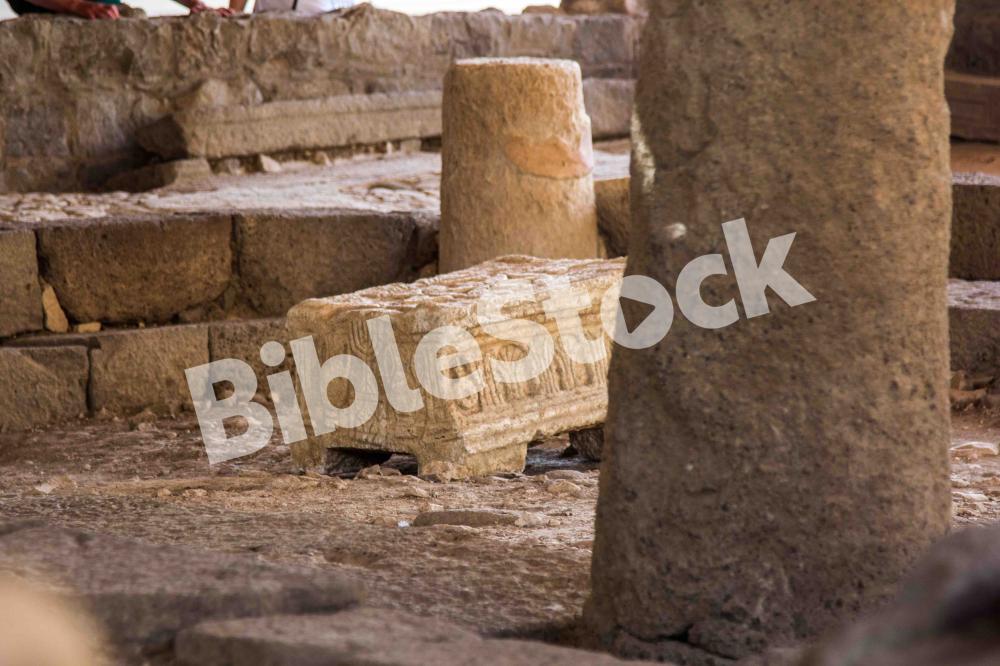
Magdala Stone Replica 5
Magdala was the home of Mary Magdalene and a large fishing community near Capernaum. Jesus almost certainly visited Magdala, though the town isn’t specifically mentioned in the Gospels. Multiple summary statements in the Gospels speak of Jesus teaching in synagogues “throughout Galilee” (Matthew 4:23). By boat, Magdala and Capernaum were just five miles (8 km) apart. The town of Dalmanutha (Mark 8:10) is speculated to have been very close to Magdala. During the first Jewish revolt, Magdala fought the Romans and lost badly. About 30 years later, around the end of the first century, a mudslide from Arbel buried the town and it was never rebuilt. By then, Tiberias had taken Magdala’s place as the most important city on the western side of the Sea of Galilee. These ruins were first discovered in 2009. The town was large enough to support two synagogues while Jesus was engaged in ministry. The ornately decorated Bema (place where the Scripture was read) in one of Magdala’s synagogues is one of the most valuable antiquities found in recent times. The carvings on it show scenes from the Temple in Jerusalem. What is seen at Magdala today is a replica of the original Bema stone.
Locations
Arbel, Bethsaida, Capernaum, Chorazin, Galilee, Gamla, Magdala, Sea of Galilee,Scriptures
Luke 6:6-11Matthew 11:1
Matthew 12:9-14
Matthew 16:5-6
Matthew 6:2